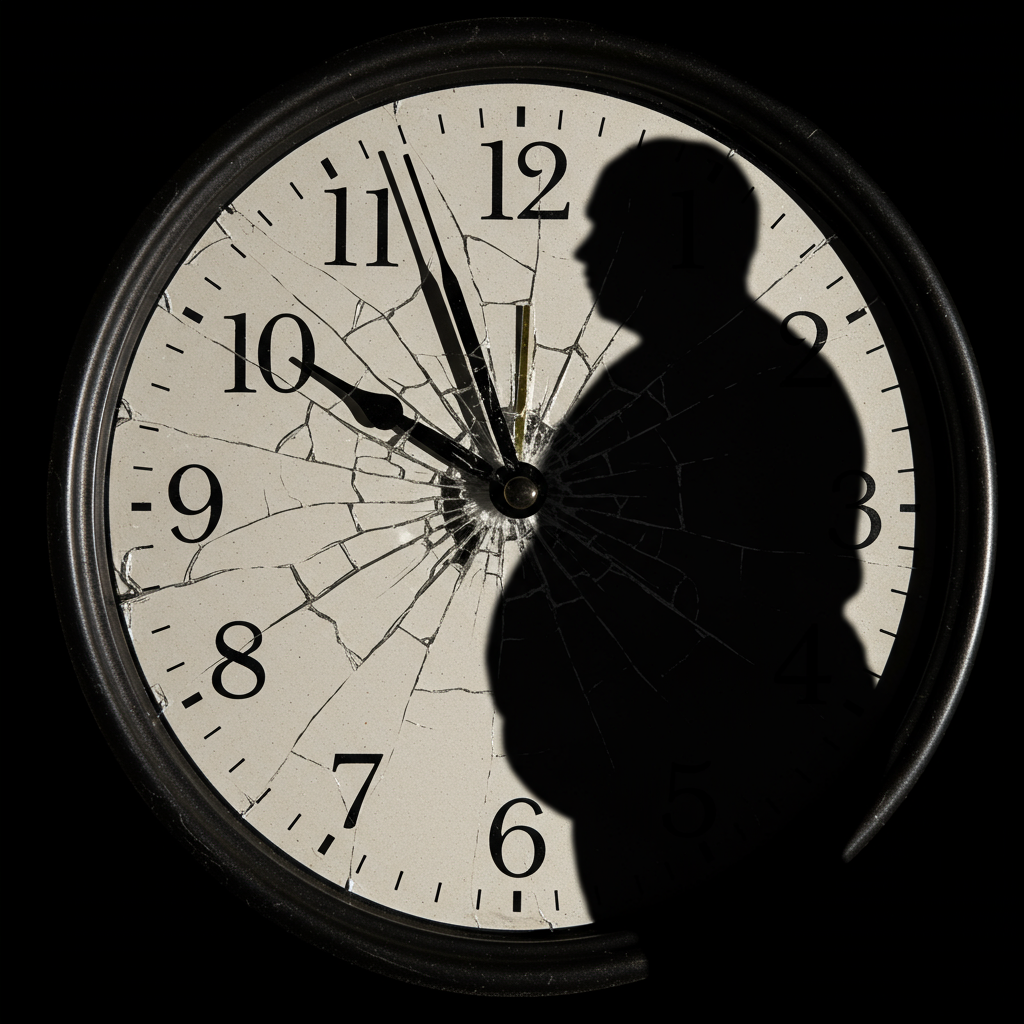Twice a year, millions of people worldwide adjust their clocks for Daylight Saving Time (DST). While seemingly a minor shift, this annual ritual creates “hidden chaos” within our bodies, profoundly impacting health in ways many don’t realize. Beyond mere inconvenience, the biannual clock change is increasingly linked to significant health risks, particularly concerning Daylight Saving Time obesity. Experts now reveal how these temporal shifts can disrupt our internal biology, contributing to weight gain and a host of other serious conditions.
The Circadian Clock: Our Internal Timekeeper
Our bodies operate on a sophisticated 24-hour internal rhythm known as the circadian clock. This biological master clock regulates crucial functions like sleep-wake cycles, metabolism, appetite, and energy levels. It relies heavily on environmental cues, especially light exposure, to stay synchronized. When DST begins in the spring, the “loss” of an hour of morning light throws this delicate system out of sync, creating a phenomenon akin to social jet lag. This chronic misalignment, researchers argue, has tangible health consequences.
Stanford researchers Lara Weed and Jamie Zeitzer have extensively studied these effects. Their work, published in the Proceedings of the National Academy of Sciences, highlights how DST-induced shifts directly disrupt the body’s internal timing system. This disruption, they found, significantly affects metabolic and cardiovascular health. Essentially, when our internal clock is out of step with the external world, our body struggles to perform optimally.
How DST Disrupts Metabolism and Weight Management
The mechanism behind the Daylight Saving Time obesity link is rooted in how morning light influences our biology. Morning light plays a vital role in regulating several key processes:
Appetite Hormones: Early light exposure helps balance hormones that control hunger and satiety.
Sleep Quality: Consistent morning light cues promote healthier sleep patterns, leading to better rest.
Insulin Response: Optimizing insulin sensitivity, which is crucial for blood sugar regulation and preventing fat storage.
When early light exposure is insufficient, as often happens during DST when mornings remain darker for longer, the body’s internal clock tends to drift later. This delayed timing, in turn, disrupts metabolism and energy levels. Over time, this chronic misalignment can contribute to weight gain, even in individuals who maintain stable diets and exercise routines. The body simply isn’t operating at its peak efficiency to process food and manage energy.
The Case for Permanent Standard Time
The Stanford study didn’t just identify the problem; it also explored potential solutions. Researchers compared health outcomes under three scenarios: permanent standard time, permanent daylight saving time, and the current system of switching twice a year. Their findings strongly indicated that adhering to a consistent, year-round schedule is healthier overall.
Permanent standard time emerged as the superior choice for public health. This is because it provides more morning light, which is crucial for synchronizing the body’s internal clock and mitigating “circadian jet lag.” The study projected significant health improvements from adopting permanent standard time nationwide:
A decrease in obesity of approximately 0.78%, translating to 2.6 million fewer people with obesity.
Around 300,000 fewer strokes each year.
While permanent Daylight Saving Time would still offer benefits compared to the current system, these were less significant, estimated at roughly 1.7 million fewer obesity cases and 220,000 fewer strokes. Interestingly, the study did not find significant effects on other conditions like diabetes, arthritis, or depression, suggesting a more pronounced role of light exposure timing in metabolic and cardiovascular health specifically.
Broader Health Risks Beyond Obesity
The impact of Daylight Saving Time obesity is part of a larger picture of health risks associated with sleep disruption. Dr. Mary Ellen Wells, director of the Neurodiagnostic and Sleep Science Division at the UNC-Chapel Hill School of Medicine, emphasizes that “sleep is one of the key pillars of health, just like diet and exercise.” Any disruption to our sleep schedule, even by a single hour, can negatively affect overall well-being by disturbing our internal rhythms.
These disruptions are linked to a range of serious health problems over time, including:
Increased risks of cardiovascular issues like strokes and heart attacks.
Metabolic disorders such as diabetes and, as highlighted, obesity.
Profound impacts on mood, focus, and energy levels.
Dr. Wells stresses that the concern isn’t solely about the quantity of sleep but critically about its quality. Chronic sleep changes erode the body’s ability to recover and regulate its systems effectively.
Actionable Steps for Better Sleep and Health
Given the significant health implications, what can individuals do to mitigate the negative effects of time changes and improve overall sleep? Dr. Wells offers several practical recommendations:
Maintain Consistent Schedules: Go to bed and wake up at the same time every day, even on weekends. This helps stabilize your body’s internal clock.
Optimize Your Evening Routine: Avoid heavy meals, caffeine, and screen time for several hours before bed. These can interfere with sleep onset and quality.
Embrace Morning Light: Expose yourself to natural sunlight shortly after waking up. This is a powerful signal to regulate your circadian rhythm.
Listen to Your Body: While sleep-tracking gadgets are popular, Dr. Wells cautions that there’s limited research proving their effectiveness. The most reliable indicator of sleep quality, she notes, is how you feel.
Seek Professional Help: If you consistently struggle with sleep, consult a healthcare professional. Nearly 100 recognized sleep disorders exist, and many are highly treatable.
The Political Landscape: A Battle Over the Clock
Despite the scientific consensus favoring permanent standard time for health, the debate over which policy to adopt permanently continues. Proponents of permanent DST often argue for the benefits of more evening light, claiming it saves energy and provides more daylight after work for leisure activities. However, a U.S. attempt at permanent DST in 1974 during an energy crisis was abandoned within a year due to widespread complaints about dark mornings and safety concerns, particularly for children traveling to school.
Major health organizations, including the American Medical Association, the American Academy of Sleep Medicine, and the National Sleep Foundation, strongly advocate for permanent standard time. They emphasize that morning light promotes healthier sleep patterns and better metabolic function. Zeitzer’s statement underscores this, noting that new data provides concrete evidence for what experts have long suspected: human bodies function optimally with earlier daylight exposure.
State-Level Efforts and Federal Hurdles
The movement to abolish the twice-yearly time change is gaining traction, with some states taking legislative action. For instance, Texas House Bill 1393 (HB 1393) has passed the Texas House of Representatives, aiming to lock the state into permanent Daylight Saving Time. However, even if such a bill clears state legislative hurdles (requiring Senate and Governor approval), it faces a significant federal obstacle.
Under current federal law, any state has the autonomy to choose to remain on standard time year-round without requiring federal permission. However, states are not* permitted to adopt Daylight Saving Time year-round without explicit approval from the United States Congress. This means that even if a state like Texas successfully passes its bill, its implementation would still be contingent upon further federal action. The political will to make such a national change has historically been elusive, despite persistent efforts and even endorsements from figures like former President Trump for keeping DST.
Obesity Trends: A Broader Context
While the link between DST and obesity is a critical public health concern, it’s also important to place it within the broader context of national obesity trends. For example, a 2019 study by WalletHub analyzed obesity and overweight prevalence across U.S. states. Despite the many daily stresses Californians face, the state ranked favorably as the 47th “fattest” state, indicating lower rates of obesity and better health outcomes compared to most other states. This study utilized 29 distinct metrics, categorizing them into “obesity and overweight prevalence,” “health consequences,” and “food and fitness.” California scored particularly well in health consequences (50th, meaning the best) and had the 48th-lowest percentage of obese adults.
In stark contrast, Mississippi was identified as the “fattest” state, followed by West Virginia, Kentucky, Tennessee, and Alabama. These regional differences underscore that while systemic issues like DST play a role, lifestyle factors and cultural preferences—such as favored comfort foods like deep-dish pizza in Illinois or fish tacos in California—also contribute significantly to overall health profiles. The Daylight Saving Time obesity connection adds another layer to this complex public health challenge, highlighting how environmental and policy decisions can inadvertently influence our fundamental biology and long-term health.
Frequently Asked Questions
What specific health risks are associated with Daylight Saving Time (DST) beyond obesity?
Beyond its link to obesity and weight gain, Daylight Saving Time (DST) is associated with several serious health risks due to its disruption of the body’s natural circadian rhythm. Experts, including Dr. Mary Ellen Wells from UNC-Chapel Hill, highlight increased risks of cardiovascular issues like strokes and heart attacks. Additionally, metabolic disorders such as diabetes, along with negative impacts on mood, focus, and overall energy levels, have been linked to the biannual clock changes. The core issue is the disruption to sleep quality and consistency, which undermines the body’s ability to maintain optimal health.
How does the timing of light exposure influence metabolic health and contribute to weight gain?
The timing of light exposure, particularly morning light, is crucial for regulating metabolic health. As detailed by Stanford researchers Lara Weed and Jamie Zeitzer, morning light helps synchronize the body’s internal clock, which in turn regulates appetite hormones, improves sleep quality, and optimizes insulin response. During Daylight Saving Time, the “loss” of an hour of morning light means individuals are exposed to less early light. This can cause the internal clock to drift later, disrupting metabolism and energy regulation, and potentially leading to weight gain over time, even with consistent diet and exercise.
What are the practical steps individuals can take to mitigate the negative health effects of Daylight Saving Time?
To mitigate the negative health effects of Daylight Saving Time, especially the disruption to sleep and metabolism, individuals can adopt several practical strategies. Dr. Mary Ellen Wells recommends maintaining consistent bedtime and wake-up times daily, even on weekends, to stabilize the body’s circadian rhythm. It’s also advised to avoid heavy meals, caffeine, and screen time before bed to ensure better sleep quality. Crucially, exposing oneself to natural morning sunlight helps regulate the internal clock. If sleep issues persist, seeking professional help is recommended, as many sleep disorders are treatable.
Conclusion
The connection between Daylight Saving Time obesity and broader health issues is clear. What once seemed like a simple, harmless adjustment has been revealed by scientific research to be a significant disruptor of our body’s internal clock, leading to metabolic imbalance, weight gain, and increased risks for cardiovascular problems. While the debate over permanent time policies continues, with health organizations advocating for permanent standard time, the message for individuals is actionable. Prioritizing consistent sleep schedules, embracing morning light, and actively managing our sleep hygiene are crucial steps to safeguard our health in a world still grappling with the “hidden chaos” of the clock change. Understanding this link empowers us to make better choices for our well-being, recognizing that health is profoundly influenced not just by what we eat and how we move, but also by the rhythm of our daily lives.




